With the first week of school behind us, the groundwork for our independent reading endeavors has been set. This week, my 9th grade students walked around my room, browsed the classroom library, and marked titles that they’re interested in reading. Through our scavenger hunt, students learned the ins and outs of how the library is organized (alphabetical by title with color coded genre stickers) and how to check out books (Classroom Booksource website). One of our quickwrites this week had students thinking about all the books they’ve read and enjoyed over the years (preparation for a reading memoir they’ll write next week). On Friday, I booktalked two student favorites from last year―All the Bright Places by Jennifer Niven and Forgive Me, Leonard Peacock by Matthew Quick―and many hands went up when I asked who was interested in these titles. And even though we’re not officially beginning independent reading for another two weeks, a few students already asked to borrow books.
I also enjoyed seeing several students from last year who stopped by my classroom to return books they borrowed, update me on what they read over the summer, and even donate books to my library. One of my colleagues happened to be in the room when they were visiting and after they left, he turned to me and said, “All your hard work last year… looks like it’s paying off.”
Yes, indeed.
To learn more about how I organize my classroom library, click here.
In Part 1 of this series, I discussed why and how I made time for independent reading in my classes. In Part 2, I reflected on how to expose students to high-interest and engaging titles through booktalks and other strategies. Here, in Part 3, I’ll share the weekly framework for independent reading I used for the first part of the school year.
EVERY WEEK, NO MATTER WHAT.
Once students have their first independent reading books selected, we set the date for our first independent reading (IR) day. In my classroom, that day is every Monday. I love starting the week this way, and as a teacher, I feel relaxed on Sunday afternoons knowing that I can look forward to seeing what reading progress my students have made over the last week. So each Monday, my students take their weekly vocab quiz (about 5 minutes) and enter their books.
THE FIRST IR DAY . . .
Our first IR day is important because it sets the tone for the rest of our time reading together. The first thing I do on our kick-off Monday is ask students to hold up their book and share the title. After we go around and share, I then show students how to take a reading rate. I borrow Penny Kittle’s method for calculating reading rates, as you can see below. I also give students a copy of this graphic to tape into their notebooks (click to enlarge):
I start by asking students to read at least two hours per week. Because this includes the 35-40 minutes of class time they are given on Mondays, students need to read approximately 15-20 minutes each night in order to meet this two hour weekly goal. Once students calculate their reading rates, they record the approximate date they should finish. Students record this information on the Personal IR Record they keep in their notebooks. I give students the chart below to tape into the back of their notebooks (click to see/save the whole document as a PDF).
Once students have filled out the initial information for their first book, they go right into reading. Meanwhile, I walk around to make sure students’ reading rates and estimated finish dates make sense.
Why Reading Rates?
I know that there are many ways to set goals for independent reading. For example, students may be asked to read anywhere from 1 book per marking period to 30 books over the course of the year. The numbers and goals vary. This works wonderfully for many teachers. But it’s not the way that works for me.
I prefer asking students to read two hours per week. Of all the numbers out there, two hours is the one number that makes the most sense to me. I want students to build a habit of reading, and I think a two-hour minimum per week (or 15-20 minutes per night) will help do that. It feels like a goal that is immediately accessible to students. Based on this two-hour minimum, students then figure out what they as individuals are able to accomplish in those two hours. (Of course, two hours itself isn’t set in stone; depending on your students and the curriculum, student could read more―not much less, I don’t think, but definitely more.)
I don’t want to discourage students who choose to read more challenging texts―either because of length or text complexity―by pressuring them to finish a certain number of books in a given time.
I like the reading rate because it considers 1) the student as individual reader and 2) the type of book. My goal is for students to read to the best of their ability given their current level of fluency and the book they have chosen. I tell students that how fast or slow we read is all relative. It may take the same student 5 days to finish the first book he chooses, but 25 days to finish the second because the second is three times longer or more difficult to understand. I don’t want to discourage students who choose to read more challenging texts―either because of length or text complexity―by pressuring them to finish a certain number of books in a given time. I’ve seen student purposely choose “easier” or shorter books when this is the case. Instead, I want students to read whatever book they choose at a consistent (two hours per week) and comfortable (based on reading rate) pace.
I think reading rates sends an important message to students, too―that their own personal goals should drive them, not a teacher-directed number. I’ve found that when students set their own personal goals, they often try to meet or beat their own goals. It’s not about beating the student sitting next to them; that student has a different set of goals. Instead, the focus shifts to what the individual reader can do given the time and type of book selected.
DURING EVERY IR DAY . . .
Each IR Monday, I ask students for an update on their reading. I use a simple “status of class” sheet modeled after what Nancie Atwell does in In the Middle. Below is a sample of my version and how I would fill it out (click to see/save a blank PDF):
I call out students names, and students quickly tell me the book they are reading and what page they are on. This gives me (and the rest of the class) a quick snapshot of their progress.
What else do I do during IR time?
An outsider might think that giving students IR time is great because it gives teachers time to grade papers or plan lessons. Students can read while I get “other stuff” done. Not true. Instead, IR days give me the time I need to confer with students about their reading. I walk around and check to see how students’ are liking their books, what challenges they’re facing, and where they think their reading is going.
If students have come to class on Monday finished with their current books, they then browse for another in my classroom library. This is my opportunity to recommend other titles they may be interested in. Based on what they just finished and what they tell me they are looking for, I can often quickly pull out 3-4 titles from the shelves for them to browse if they are having trouble finding something.
I also use our IR days to walk around the room to check and read through the IR reflections they’ve done for that week. If I’m able to finish reviewing their notebooks and conferring with all the students I can that day and there is still time left, I then sit down with students and do what they’re doing―read.
At the end of each IR day, I ask for volunteers to share a little bit about the book they are reading. Other times, I might pass out index cards and have students write a brief message to me about their book as an exit ticket.
READING REFLECTIONS
In addition to reading the two-hour minimum each week, I also expect students to come to class with a one-page written reflection in their notebooks. We use the back half of our reading/writing notebooks for all independent reading related writing (the front half is for anything we do in class).
I want their independent reading to be, first and foremost, a pleasurable experience.
There are many ways to ask students to respond to their independent reading. I have found that I need to give students direction but that in order for the reflection to be meaningful, it cannot be cumbersome. My goal for independent reading is for students to spend their time reading and just reading. I want their independent reading to be, first and foremost, a pleasurable experience. When we ask students to stop to reflect at the end of every page or every chapter, we risk interrupting the immersive experience students need to find pleasure in their reading (more on this can be found in Reading Unbound by Jeff Wilhelm and Michael Smith. Real-world reading doesn’t typically include these types of school-related activities. I know it’s generally not what I do when I read. When I read for pleasure and I’m finished a book, I usually just pick up another book and continue.
At the same time, students are not necessarily the experienced readers that we are. And I do think there is value in having students write about their reading. Writing is thinking. Too often, less experienced readers may read without taking the time to process what they read. So the key for me, as a teacher, is to ask students to reflect about their reading in a way that doesn’t compromise the pleasure of their experience.
Notice and Note Reflections
In order to get full credit for the independent reading they do each week, students not only have to meet their weekly goals―the number of pages based on their reading rate―but they also have to write a 1+ page response to some aspect of their reading that week.
I allow students the opportunity to respond as freely as they would like. I stress to students that this 1+ page reflection should be focused on their response to their reading―their opinion, beliefs, predictions, thoughts about what they read―and not a summary of their reading. I find this distinction to be the biggest hurdle for students―to focus on writing on their thinking about the reading versus simply summarizing plot.
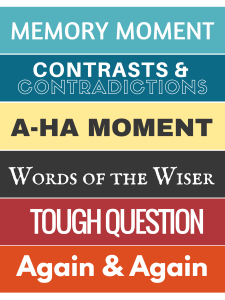
To help students focus on what they notice and note about the reading, then, I ask them to apply one of the six signposts from Kylene Beers and Robert Probst’s Notice and Note: Strategies for Close Reading to their reading that week. I introduce the signposts through one of our whole-class texts and once I’m sure students understand them, they can then apply these signposts to their independent reading.
I find that the signposts provide just enough guidance without restricting the possibilities for authentic response. And although the signposts cover significant territory when it comes to close reading, they are not, by any means, exhaustive. In fact, Beers and Probst write in their book that they had considered including many more signposts than these final six. I tell students to write on whatever aspect of their reading is calling out to them, regardless of whether or not it fits with one of the signposts.
By using the signposts, students not only notice the patterns and features found in their independent reading, but across all their reading including our whole-class novels. Last year, for example, after students had been working with the signposts in their independent reading, I then asked them to think about how the signposts could apply to the play we were reading aloud together in class, Much Ado About Nothing. Student easily saw the applications and connections.
And isn’t that the point of independent reading? To make students better readers across the board. My hope is that the reading students choose to do independently can help to enrich the more challenging whole-class novels we read together. And vice versa. Research has consistently shown that volume―the amount of reading that students do on their own for pleasure―is the best way we can strengthen readers today and ensure lifelong reading later.
Letter-Essays
To deepen their thinking about their independent reading, this year I am borrowing Nancie Atwell’s letter-essay assignment, as described in In the Middle. Every three weeks, students choose one of their recently finished books and write to a peer or the teacher about the book. In the letter, they discuss what they liked/disliked about the book and include/analyze a brief passage. In other words, the letter-essay is an opportunity for students to compose a type of book review.
At the end of last year, I tried out letter-essay writing with my students. I asked my 9th graders to write a letter-essay to future ninth grade students. Students recommended and reviewed their favorite independent reading selection from the year. I compiled these letters into a binder that I keep next to my classroom library so that my current students will always have a recommendation within arm’s reach.

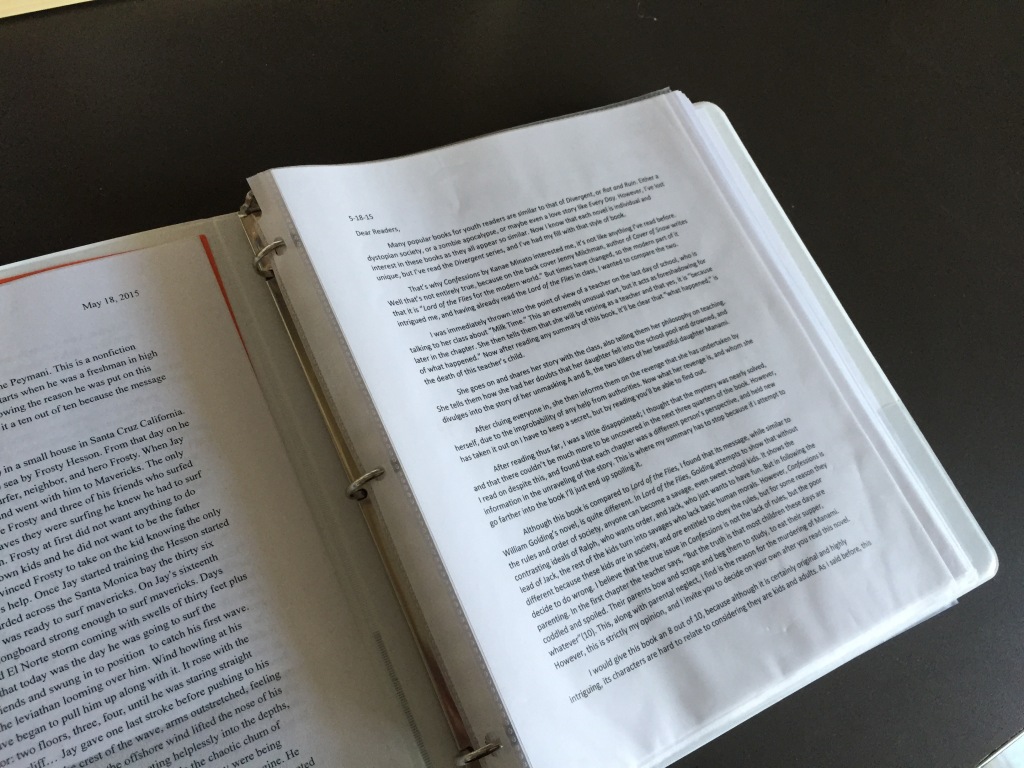
WHAT ABOUT WHOLE-CLASS NOVELS?
One important thing I want to note is how our whole-class texts worked alongside students’ independent reading. In the freshman course that I teach, we spend most of first semester on the following whole-class texts: summer reading, The Epic of Gilgamesh, Much Ado About Nothing, Cyrano de Bergerac, and Lord of the Flies. This year, we’ll also be spending time on more personal essay writing during the first semester. That said, with the exception of Lord of the Flies, most of the reading we do is done during class. Our two plays take up the majority of first semester, and we read and act out both plays in class. Although there is work related to the plays to be completed outside of class, students have little additional reading to do at home. Thus, asking them to read independently for two hours per week is more than manageable for students.
However, when we get to whole-class novels, students are immersed in our shared reading. During the second semester, our whole-class text list looks like this: Things Fall Apart, Purple Hibiscus, Persepolis, and The Kite Runner. I could continue to set aside each Monday to read, and I could continue to ask that students read their independent reading for 15-20 minutes per night. But that would mean that students would be responsible for independent reading at the same time I’m asking them to read 20-30 minutes for our whole-class novels. As much as I would love for students to do both, I also have to be a realist. I know students will not do both, and given the choice between doing the required whole-class novel reading and their independent reading, they will choose the whole-class text and “fake-read” their independent reading.
Then there is the issue of immersion. Is it possible for students to read two different books―the whole-class novel and independent reading―at the same time? Yes, it’s possible. In fact, there are some students who do so on their own. And I encourage students to do so. But as a teacher, I don’t feel right about requiring students them to.
One of my goals is for students to find pleasure in the immersive experience of reading, not only with students’ self-selected independent reading, but also with our whole-class texts. I don’t want to compromise that experience by spreading students too thin, across too many texts. I brought this concern up to students last year when the second semester began. One student asked if we were going to continue our IR reading on Mondays. I explained my concerns about splitting students’ attention between texts. How did they respond? With relief and regret. Relief because they knew how overwhelming keeping track of multiple books could be. But they also expressed regret―regret because they had grown to look forward to our IR Mondays. “It’s so relaxing,” they commented, “we get to just read our books.”
Some students worried that our whole-class novels would replace all of our independent reading. And that’s when I revealed my plan for independent reading during the second semester―Read-A-Thon. What’s Read-A-Thon? Dedicated, uninterrupted time to read during class and at home. What did our Read-A-Thons look like? I’ll discuss my approach to independent reading alongside whole-class texts in my next post.
In the meantime, if you have any questions or comments about how you structure independent reading in your classes, let me know!
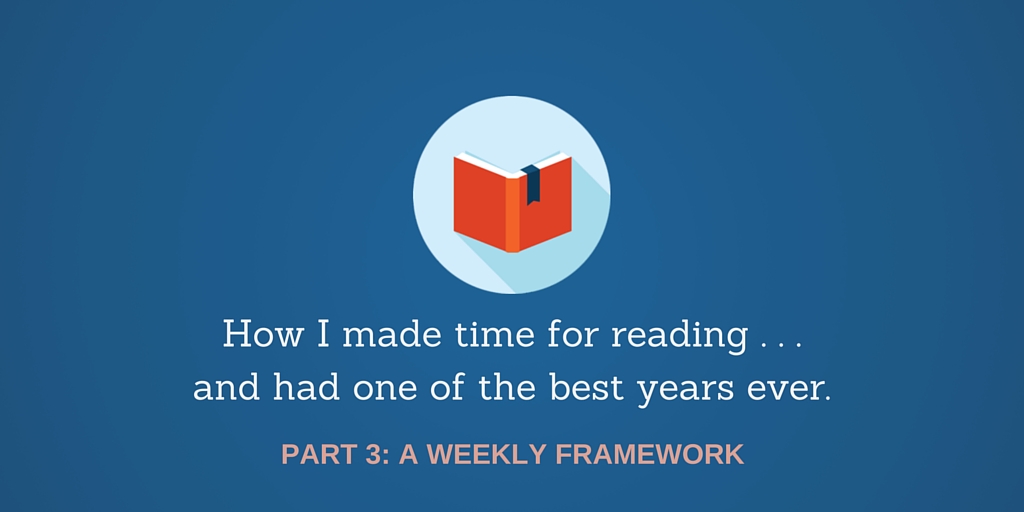
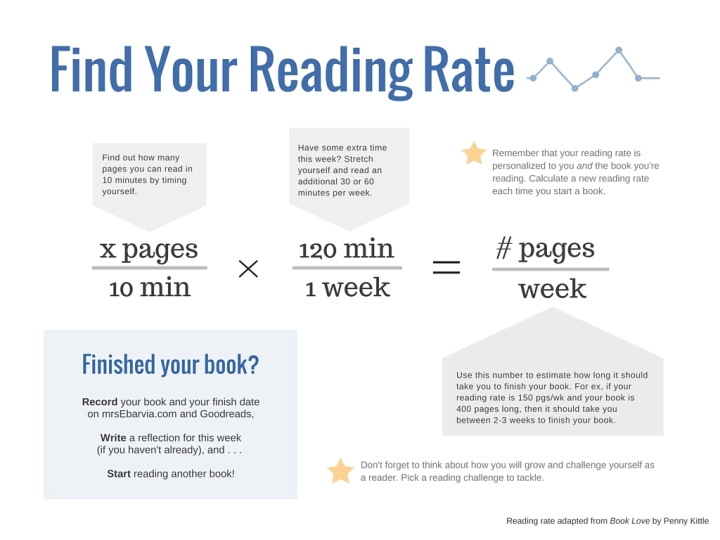


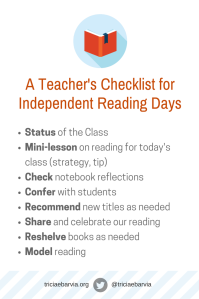
Thanks, Tricia! I have been eagerly anticipating the next post in this series! One question for you: do you worry that you are using IR time in class to catch up on conferences, make recommendations, check in w readers, rather than read yourself? We’ve been wondering about the message it sends if the teacher uses that sacred time to do anything other than reader herself… It’s like when we write together: I write with them, rather than using the time to catch up on anything else. Just wondering where you were on that point.
Looking forward to the next post! Thanks again!
Deb
LikeLike
Hi Deb! I see where you are coming from, and when I started doing more independent reading with students, I often sat and read alongside them, just as we would write when they write. I think there is a difference, though, between writing with students and reading with them. When we write beside students, we share what we write and make our thinking visible – our process, struggles, strategies. If all we do when we read alongside them is just read, many of the processes that make us more experienced readers aren’t visible to students, which is why I think using the time to confer with students about their reading 1:1 is so valuable.
I think even if we spend IR time conferring with students about their reading, we’re still sending the message that we are readers to students. After all, we are modeling what readers think about and question as they read. Because I “talk books” almost every day formally and informally, students know what type of reader I am. They don’t need to see me physically reading, silently, to know that – does that make sense?
On a related note, I highly recommend the book No More Independent Reading without Support by Deb Miller and Barbara Moss. You can download an excerpt on the Heinemann site, but here’s one passage that stood out to me from the opening chapter.
“SSR and DEAR appeal to so many teachers because they’ve been told that reading together creates community and that by reading a book while their students read, they’re modeling what being a good reader looks like. But how much information is a student gathering from watching a teacher read? Not much. The student observes quiet eyes focused on the text for a set period of time, some page turning, perhaps a gasp or chuckle, but mostly nothing that couldn’t be communicated by a photograph of someone reading. It’s an intention that’s on the right track, but misses the mark.
For students to do more than race through lots of books, they need a teacher to show them what behaviors they need to practice as they read, and the teacher needs opportunities to monitor and give feedback on how students are using those behaviors. With SSR and DEAR, both the students’ and the teacher’s process of making meaning of a text are invisible and can’t influence one another. Teachers need to talk about how they make meaning of a text so that the process is “visible” to students.”
LikeLike
Hello-
Can you tell me more about the letter-essays you have students write? Or have you already done a blog post about that subject?
Thank you,
Mai-Linh
LikeLike
I know I’m three years late to this blog post series (thanks for tweeting about it again today!). I love the level of detail you go into about what you do and how you make this work. I teach reading to middle schoolers who read 2 or more years below grade level (whatever that means!) but aren’t on an IEP for anything reading or language related. I’m in a small town school district with 55% Latino students and 63% students in poverty. You and I have very different populations in our classroom. BUT–these processes and the thinking behind them still apply. Thank you for the time you put into these posts and for being so willing to share not just your philosophy, but some of your nuts-and-bolts pieces.
LikeLiked by 1 person
I just read through the three posts related to Independent Reading, and got a lot out of them. I’m wondering if you’ve ever used something like Flipgrid to do video checkins on students’ reading? I think that could also be a great way for students to share what they’re reading with others…
LikeLike
YES! Since writing this post almost three years ago I’ve had students do Flipgrid book reviews! 🙂 I think using Flipgrid to do reflections while they are reading could be great too.
LikeLike